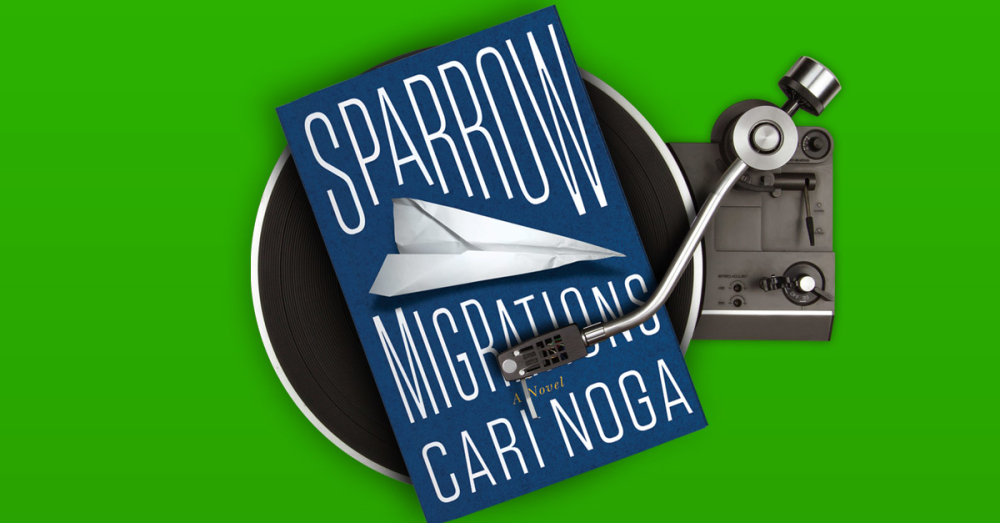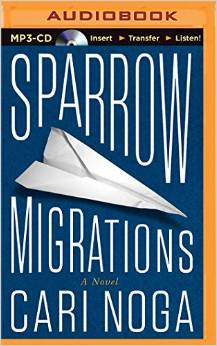Are You Listening? Indie Authors Make Aural Arguments for Audiobooks

The spoken word has held its share of the book market over the years and decades, no matter the technology changes that have altered media formats on a near monthly basis. Perhaps the explanation is as simple as its timeless appeal.
“We enjoy being read to,” said Susie Bright, editor at large and executive producer for Audible, the Amazon-owned spoken-word publisher. From the earliest memories of having a parent read a bedtime book or authors presenting excerpts from their work, “We like listening to stories.”
What technology has done is to welcome more independent publishers and authors to a table once reserved for mass-market titles. Cari Noga’s debut novel, Sparrow Migrations, which she’d initially self-published, was picked up for paperback release next month and will also—she was proud to learn—be available for listening pleasure.
“It’s another format that gives you more market reach,” Noga said. “It stands to reason that will rise as people get more comfortable with the technology.”
We asked Bright and Noga about the state of and prospects for what may be the newest growth area in the world of publishing.
“Talking Books” Are Nothing New

Susie Bright
Cari Noga
Hardly, as the Library of Congress first provided “talking books” in the 1930s as a service for the visually impaired. Spoken-word books in the decades that followed were available on vinyl, reel-to-reel tape, and cassettes—which sparked interest from a broader, Walkman-wearing public. In the twenty-first century, spoken stories are more available than ever.
“With smart phones, tablets, Kindle, and all of that, suddenly there was a new lease on audio,” Bright said. “Why not have a way to listen to stories when your eyes and hands are busy.”
According to the Wall Street Journal, sales of audiobooks have grown by double-digit percentages in recent years, unlike the stabilization seen with e-book formats.
“Suddenly it was like a new lease on audio life,” Bright said. “You could make great-sounding stories and listen to them off a computer.”
How Have Audiobooks Fared in the Digital Revolution?
Audible was brought under the Amazon umbrella in 2008, just ahead of the smart-phone invasion that Bright said further expanded the potential audience. Audible has released more than 180,000 titles, part of a collective $1.2 billion industry.
“In the old days of cassettes or CDs, only the best sellers got made into audio,” Bright said. “Now audio is more a part of the reading renaissance. It’s the tip of the spear at this point.”
According to the Audio Publishers Association, unit sales rose nearly 30 percent in 2011 compared to 2010. Nearly thirty-six thousand titles were released by audiobook producers in 2013, according to the New York Times, up from just over six thousand the previous year.
Let’s Hear it for—and from—the Author
First-time novelist Noga had wondered herself about the prospects for an audio version of her novel, initially self-published before this year’s reprint by Lake Union Publishing.
“It seemed too high a technical hurdle,” Noga said. During a book club event Noga had attended when her novel was first released, she’d met a visually impaired woman who, at the time, wasn’t able to enjoy the book with the rest of the club.
“I didn’t have access to anyone who’d done it before to show me the way,” Noga said. The expense might have been prohibitive on her own, but she was thrilled when Audible made the contract offer and hired an actor to narrate the work.
Noga, however, expects to be heard as well—and recently spent time at a local radio station making use of the equipment to record the book’s acknowledgments.
An “Audio Renaissance”?
Having made the transitions from cassette to CD to digital download, audiobooks are easily adaptable to whatever the next device will be. The format welcomes conventional top-sellers, small-press titles, and even original programming in the model of Netflix. The New York Times last year described the beginning of, “An audio renaissance … a modern version of the Golden Age of radio drama,” with full-cast recordings complete with elaborate sound effects.
Noga said that the ease of technology levels the playing field for authors and presents a spectrum of possibilities to be explored.
“We’re in an era where people are so much more selective about how they spend their time,” Noga said. “You need to have your book available in a format that suits them.”
And no matter if on record, tape, or MP3—or a parent reading a child to sleep—who doesn’t like to hear a good story?
“It’s something I always said: Everyone loves to be read to,” Bright said. “There’s something special about a magnificent voice reading to you. Maybe I’m an odd duck … but odd ducks aren’t so odd now.”

James A. Mitchell is a veteran reporter and author of four books, including The Walrus & the Elephants: John Lennon’s Years of Revolution and But For the Grace: Profiles in Peace From a Nation at War. You can follow him on Twitter @jamesamitchell3.
James A. Mitchell
